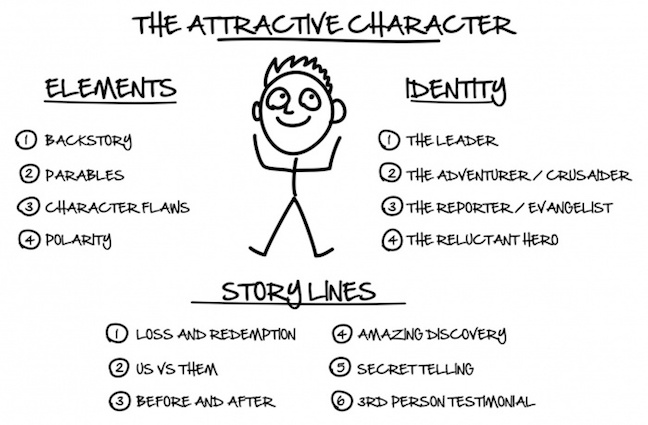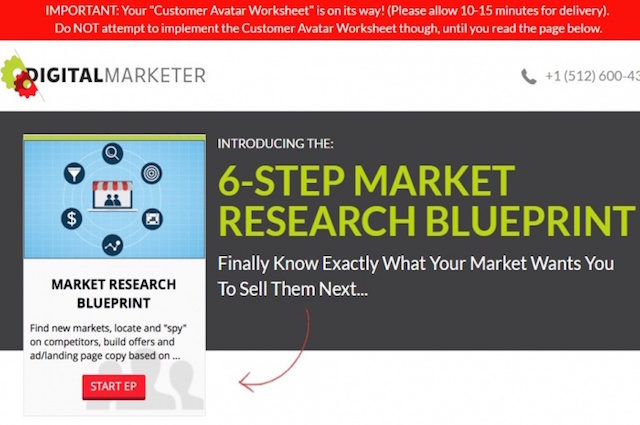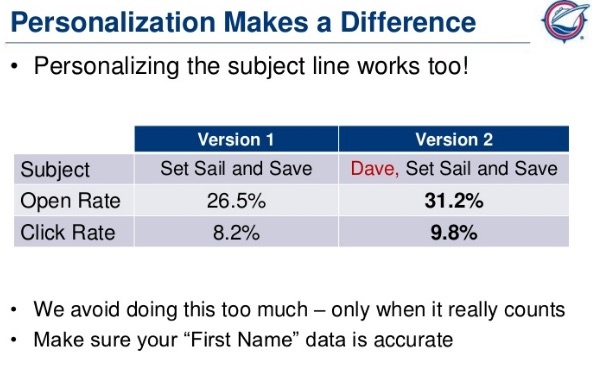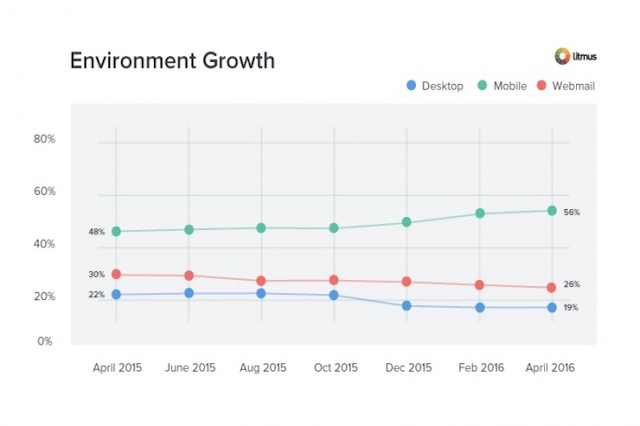If you’re not using email to market your hotel, start today, start yesterday! It’s 6 times more effective than social media, and it’s your most direct (digital) line to your guests.
 Social media and search engines can help you drive more traffic both organically and with the help of ads, but it’s common for people from these channels to still be early in the buying stages – lookers, not bookers (this can be a different story when you’re running a flash sale or an especially enticing special offer, of course).
Social media and search engines can help you drive more traffic both organically and with the help of ads, but it’s common for people from these channels to still be early in the buying stages – lookers, not bookers (this can be a different story when you’re running a flash sale or an especially enticing special offer, of course).
To gain loyal guests and grow your hotel website’s conversion rate, you need a private communication platform like email. Email marketing gives you an opportunity to build a personal relationship with your past guests, present guests and (hopefully) future guests. You can send email database highly relevant offers that will grab their attention in a way a banner ad often can’t.
How do you build successful marketing emails for hotels? What does one look like? Our expert marketers have the answers. Here are our top 6 secrets of successful marketing emails for hotels:
1. Give your hotel a face
People, as a general rule, prefer interacting with other people, not faceless businesses. Email gives you the opportunity to put some personality, a virtual ‘face’, into your hotel’s marketing strategy.
One straightforward way to do this is to send your newsletters, offers and ezines to people as a single person, one with a name and position in the company.
This person needs to be someone important, like the head of the marketing department or your hotel’s general manager. Russell Brunson of Dotcom Secrets calls this person theAttractive Character. Russell doesn’t mean superficial attraction – he’s actually referring to a persona that the audience likes because they see a part of themselves in this person.
Why is this so important? It shows that your hotel is run by people with stories, who have the same problems, interests and motivations as guests. Express empathy with your target audience!
For example, if your hotel caters to families, write your emails as someone who understands the rewards and challenges that come with travelling with a family. Don’t know what it’s like to travel to a different country with two toddlers? Ask someone in your hotel who does! Mention your kid-friendly facilities, tailor your special offers for families, and throw in something for a parent to do to relax, away from the kids.
We’re not suggesting telling your guests long, rambling personal stories – just make sure they know who you are. Write like someone with a personality, let them put a face to a name, give them relevant offers and information, and make your hotel the solution to their problems (e.g. “Too busy to spend quality time with the kids/overwhelmed with life’s demands? We get it – we have kids too! Come to Our Hotel, where we have fantastic activities that kids love, a family-friendly atmosphere and a great spa for you to relax in while they play”).
Write in different ways and send different offers to separate segments of your audience. This should be an easy task if you have already done the hard work of creating your customer personas.
2. Build a relationship
Most hotel marketers want amazing results overnight. We’re hoping to convert more subscribers to hotel guests just by tweaking our subject lines or adding a few more calls to action. However, while there are certainly miracle stories of conversion rates shooting up at the touch of a button (or a button’s change in color), these are unicorns, not the way it usually goes!
This is because in email marketing, the relationship you build with your subscribers is more important than the specific sales copy. It is very important for you to build a relationship with your subscribers before you can expect them to book a hotel room.
If your subscribers like and trust you, a higher percentage of them will be interested in booking a room at your hotel.
So how do you build this relationship?
The content you share should solve the biggest problems your target audience has. Those problems can range from making travelling easier to saving money. These emails can be sent as autoresponders you set up through your email marketing software.
Here’s a format you can follow:
1st email:
You want to start the first email by introducing yourself and your hotel.
After that, share your best travel tip or a piece of content about a great local attraction. This tip should give value – let them know that it is worth subscribing to your list
End the email by telling the subscriber on what to expect in the next email, and when they’ll get it. Keep it short and sweet, instead of overwhelming them with 20 of your most recent special offers.
Emails 2, 3 and 4:
In emails 2, 3 and 4 you should share more travel tips and more stories about your character. You can also show them special offers you think are relevant to them. This will further strengthen the relationship with your subscribers. If you receive replies with questions, make sure you respond quickly with ‘welcomes’ and answers to the questions.
3. Inform subscribers about one offer early on:
Some subscribers aren’t looking for the slow burn. They want to know what your prices are, the facilities you offer, and the best deal you can give them – and they want to know now!
Fortunately, there’s an easy fix. Just include a plain link to your latest offers page at the end of the first email. You don’t need to write too much copy to try and sell it, because if they are itching to book they won’t need much convincing. This will also keep your email less salesy and more educational.
You can also try retargeting ads for guests who have abandoned your site mid-booking. This way your first emails to new subscribers will remain free of hard sales tactics. You can also send retargeting emails, unconnected to the normal series of emails you send when someone signs up. That means that the only people who get an email encouraging them to book right away are the ones who were already mid-booking.
Another method you can try is redirection. This is when you redirect the person who just subscribed to your list to a landing page for a specific special offer, which can convince potential hotel guests to book a room.
Digital Marketer does this really well. I recently signed up to receive their customer avatar template, and then they sent me to a landing page to one of their products. A message at the top of the landing page asked me to read this page before I checked my email for the template. This is something you can definitely try to promote your hotel rooms.
 4. Create one time offers:
4. Create one time offers:
The power of scarcity is one of the best tools to sell hotel rooms. Scarcity triggers emotions like envy and fear of missing out. People are tempted to make the purchase quickly, without spending too much time pondering.
Scarcity is an easy thing to trigger. Just create a one-time offer on your hotel rooms using either time or product limits. A time limit is when the offer is only available for a certain amount of time and product limit is when the offer is limited to the number of available rooms.
A great time to promote your one-time offers is right after your email relationship building series ends.
5. Test emails and track behaviour:
Marketing – especially hotel email marketing – is half art, half science. Different audiences behave differently. One method doesn’t suit all. This is why we test everything. Testing everything on a regular basis helps you find the perfect formula that will get outstanding marketing results again and again.
For hotel chains and larger branded hotels with a lot of traffic, split tests are a great way to test variations of your emails and landing pages. If you don’t have the traffic for split test (many hotels, especially independents, don’t have enough website visitors to get reliable results), you can use tools like the Five Second Test to run your tests. You can also poll staff members, and ask people unconnected to your hotel.
Here are a few suggestions for tests you can run…
Subject lines:
Great subject lines are the first thing you need to for your hotel marketing emails to succeed.
A good subject line is absolutely essential – in many cases, especially if they’re unfamiliar with you, a subject line is what determines your open rate. You should regularly test subject lines to see which ones resonate best with your audience.
 Sometimes even the simplest of changes can get you results. Expedia, for example, simply added the name of the receiver to the subject line and this boosted both open and click rates.
Sometimes even the simplest of changes can get you results. Expedia, for example, simply added the name of the receiver to the subject line and this boosted both open and click rates.
Email length:
Some people prefer reading long emails while others like short, quick ones. It’s a matter of how interested they are in you, how much time they have, and personal preference. Make sure you test emails of different lengths to see which your audience prefers.
Images:
Images in emails are the source of some of the great email marketing debates. One rule we stand by: don’t fill the entire above-the-fold area with an image. If all they see upon opening your email is an image without context (is it an offer? How much is it? When is it for?), your conversion rates will plummet.
That said, the only thing that should matter is whether it gets you positive results, and the best way to be certain is by using split tests.
These are only a few examples of the tests you can run. You can test anything – text colour, calls to action, time of day, etc.
Just testing your emails is only half the conversion optimisation battle. Split testing your emails will only show you if the open rates and click rates have increased. They won’t show you how the person interacted with the landing page. To do that, track visitor behaviour on the landing page by using heat and scroll maps.
For best results, create a version of your offer landing page and use it for your email subscribers only. You want to keep these results separate from the behaviour of people who visited your website from search engines and social media.
6. Write for both desktops and mobile users:
56% of emails on average get opened on a mobile device. This means that you need to make sure your emails are optimized for both mobile and desktop users.
 The subject lines, the email lengths, the text size, etc. should all be optimized for both sets of users.
The subject lines, the email lengths, the text size, etc. should all be optimized for both sets of users.
For example, you already know that the subject line that is visible in the inbox is much shorter for mobile users than desktop users. This means that if you want more mobile users to open your emails, you should write subject lines that entice readers in the first few characters. Take a look at your emails from the perspective of desktop and mobile users and make sure it suits them both.
Conclusion
To summarize, our top 6 secrets of powerful marketing emails are to:
- Give your hotel a face by creating an attractive character
- Build a relationship with the subscribers through this attractive character.
- Begin marketing your hotel rooms to your subscribers with one time offers.
- Test your emails to improve upon them
- Optimise your emails for both mobile and desktop users
Do you know any other secrets of successful marketing emails for hotels? Let us know!
Net Affinity
Focused exclusively on the hotel sector, Net Affinity has collated the brightest, most commercially focused, experienced and passionate team of online marketers, account managers, designers and developers whose combined skill set ensures our clients online success and continued growth. We created this blog because we wanted to share our expertise with you, and offer you the knowledge that over 15 years experience in the hotel industry has given us.
Source: www.4hoteliers.com











